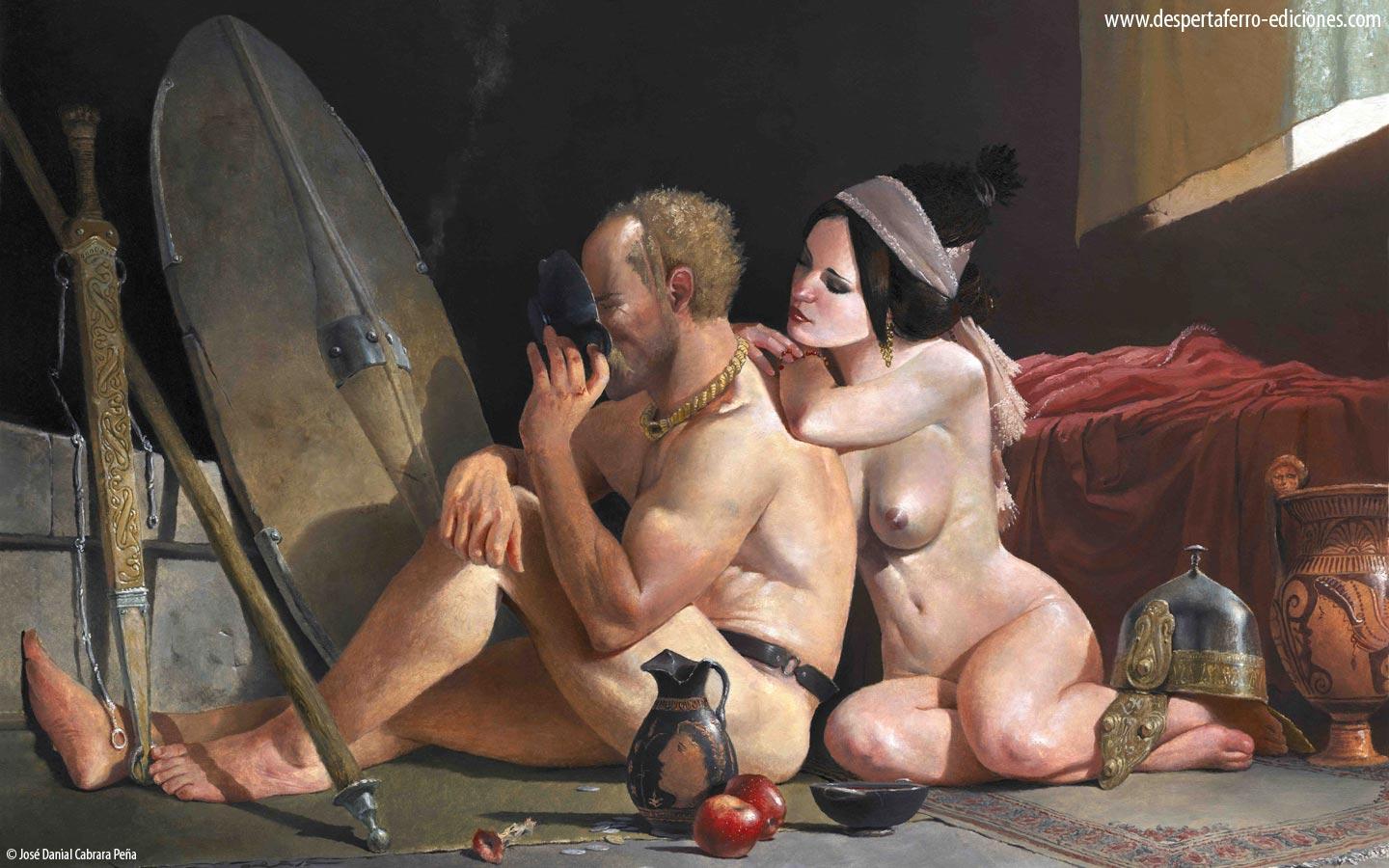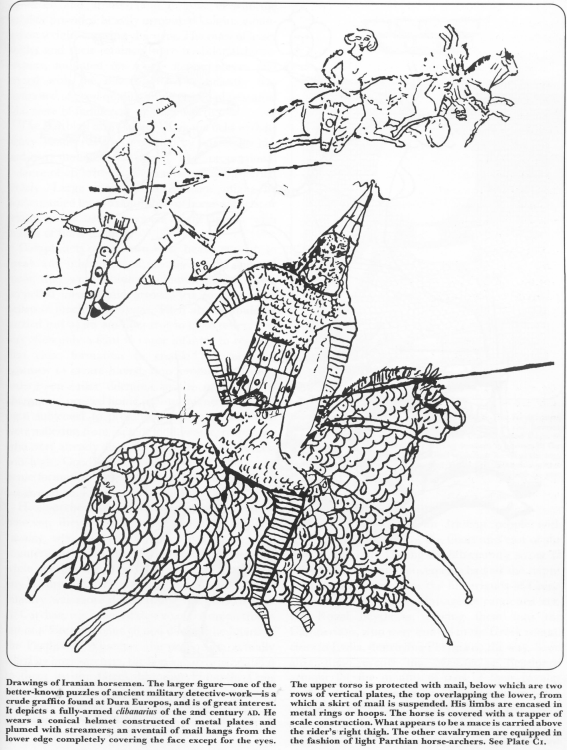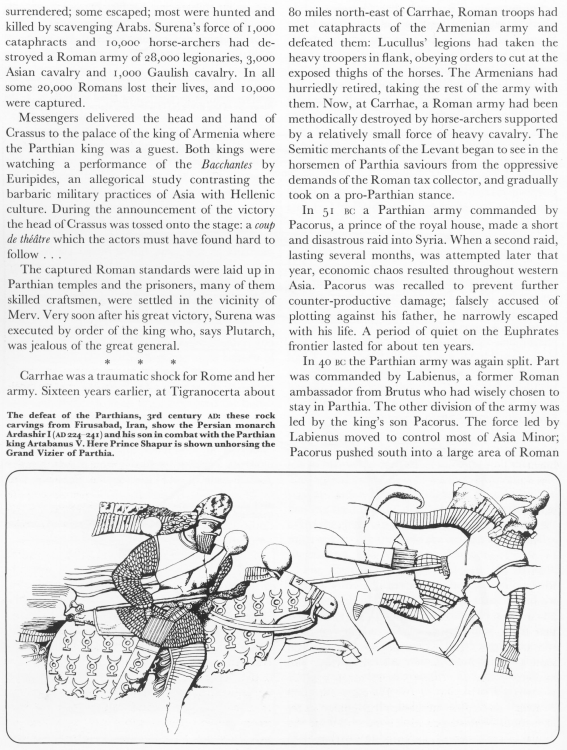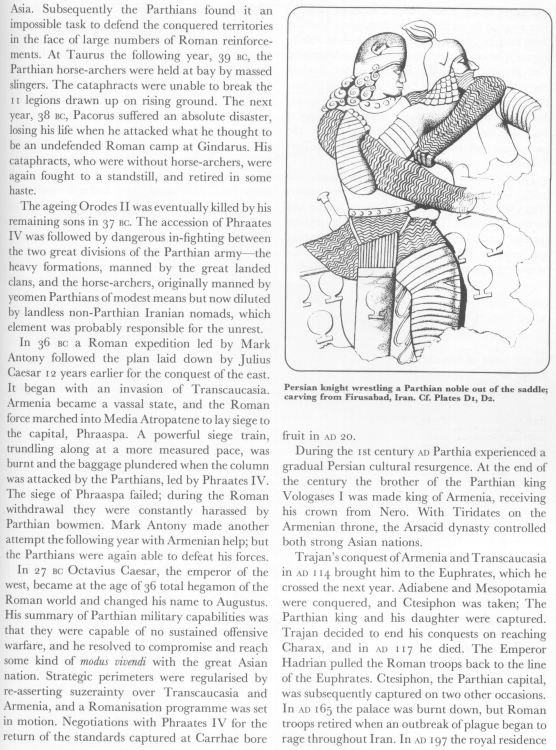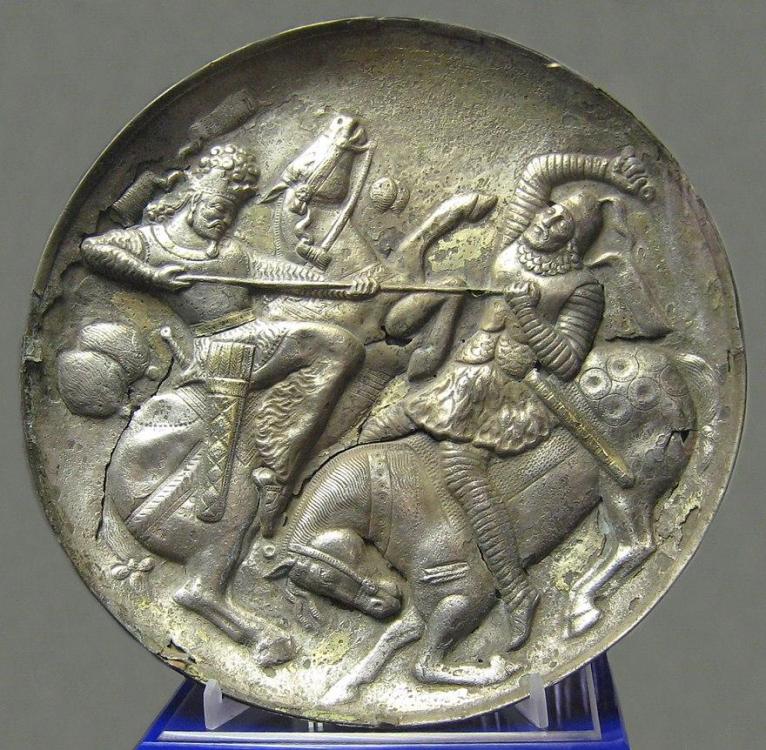-
Posts
2.379 -
Joined
-
Last visited
-
Days Won
80
Everything posted by Genava55
-
.thumb.jpg.b21ca1d0c15fb56b42c39b25a0a40815.jpg)
Cataphracts. (differents cultures)
Genava55 replied to Lion.Kanzen's topic in Tutorials, references and art help
-
As I mentioned a long time ago, the society of the ancient Britons is very pastoral, although with some development of farming and grain storing but not as much as on the continent. Dogs probably lived close to humans. Numerous dog remains has been found in Danebury hillfort, suggesting the dogs lived there and had known various lives and conditions. Some dogs were treated with care, some dogs were weak and fragile, some dogs were tall and tough, some dogs were eaten and some dogs seem to have been neglected. So it seems that dogs were carefully chosen for specific purposes. It is probable that war dogs and hunting dogs were breed for the elites, not for the common-folk that would rely on different kinds of dogs to keep his herd. In Irish history and myths, big dogs are generally valuated and are mentioned as related to important characters. They lived nearby their home or on their domain. So a kennel is plausible because those war dogs would have been valuated, even if it is more probable they would have lived in the house or in the barn. If the dogs are trained in the stable or/and in the corral it is also plausible. The kennel can have some benefits, even to search some dog oriented technologies. I like the idea of @LetswaveaBookabout the kennel having a quicker recruitment. For the kennel build limit and discount by kennel, I don't know. I would prefer one or two technologies available.
-
If you mean Vercingetorix, leader of the Arverni, he wasn't exactly high king of all the Gauls. He was leading a league of multiple tribes, they gave him the commanding power of the league, but he didn't have a full authority on the different tribes. It was more hegemonic, similar to the Greek leagues (like the Delian league). At the origin, it was a decision made by one of the beloved founders: Ken Wood. The Alpha 23 was named after him. You can see in this interview his interests about the Iberians, Celtiberians and Lusitanians: https://web.archive.org/web/20100104100236/http://wildfiregames.com/0ad/page.php?p=1489 We know there are some issues in how they are depicted. The archaeology of the Iberian Peninsula is not simple, most of the sources are in Spanish and they weren't accessible until recently. The current Iberian faction mixes features from the Iberians, Turdetani (Tartessos), Celtiberians and Lusitanians. Each of these people spoke a different language.
-
.thumb.jpg.b21ca1d0c15fb56b42c39b25a0a40815.jpg)
===[COMMITTED]=== Persian Unit Texture Upgrade
Genava55 replied to wackyserious's topic in Completed Art Tasks
Kamandar i Kappodakiya, Anatolian Archers Arvadnii Kappodakiya, Anatolian Tribesmen Nezagdar i Kappodakiya, Anatolian Spearmen Mudunup i Kappodakiya, Anatolian Light Cavalry Aswar i Kappodakiya, Anatolian Medium Cavalry Doryphoroi Pontikoi, Pontic Spearmen Uazali, Karian Warband Doryphoroi kata Galaton, Doryphoroi kata Galaton Machairophoroi kata Galaton, Galatianised Swordsmen Phæzæghashkha,North-Western Caucasian Infantry Hayots Ayrudzi, Caucasian Lancers Hai Nizagamartik, Armenian Spearmen Netadzik Ayrudzi, Armenian Horse-Archers Tiknazor, Armenian Bodyguard Dranik Gund,Armenian Royal Guard Aznvakan Aspet, Armenian Cataphracts Payadag i Gurgan, Hyrkanian Hillmen Payadag i Falakhanan, Eastern Slingers Eranag Payadag, Western Iranian Archer-Spearmen Kamandar i Pars, Persian Archers Aryanag Payadag, Eastern Iranian Archer-Spearmen Payadag iAshtan , Iranian Javelinmen Eranag Payadag i Taparan, Iranian Axemen Nezagdar, Iranian Spearmen Payadag i Kardakan, Persian Heavy Spearmen Regalin, Akkadian Heavy Infantry Eranag Aswar i Ashtan, Iranian Javelin Cavalry Eranag Aswar, Iranian Medium Cavalry Aswar i Mad, Median Cavalry Aswar i Khweshawandan, Iranian Heavy Cavalry, Iranian Royal Cavalry Payadag i Balk, Baktrian Tribesmen Aswar i Rakhvad, Arachosian Cavalry- 160 replies
-
- achaemenids
- persians
-
(and 2 more)
Tagged with:
-
.thumb.jpg.b21ca1d0c15fb56b42c39b25a0a40815.jpg)
===[COMMITTED]=== Persian Unit Texture Upgrade
Genava55 replied to wackyserious's topic in Completed Art Tasks
Because what is described in Herodotus doesn't necessarily apply for the 3rd century BC at the time of the Seleucid empire. EB2 is strict about the material of the time period.- 160 replies
-
- 1
-

-
- achaemenids
- persians
-
(and 2 more)
Tagged with:
-
This is why I suggested something more neutral here, trying to find a compromise. I don't think the point is to pick a side, the point is voicing our opinion against a war that can lead to an escalation. Yeah I agree. The current state of the poll is messy.
-
Not talking about this is also a position. See the comments: https://www.facebook.com/play0ad/posts/10160029806559859
-
Lol. Good luck being convincing here with this attitude.
-
You have entirely misunderstood his point and why I sent you this video. You mentioned the Russian community in Ukraine and their relatives the Ukrainians, I have specifically quoted this part from your message. The speech from the Kenyan ambassador specifically deals with this idea of ethnic unity. I think you are underestimating what's going on and you are thinking it is only a matter of skin color. It is not. If it was China invading Taiwan, it would have been the same worldwide reaction.
-
збере́ження (zberéžennja) or preservation/conservation/saving/safeguarding, it can be used in different context. Otherwise there is Mykola Zerov, a writer and poet. http://www.encyclopediao@#$%raine.com/display.asp?linkpath=pages\Z\E\ZerovMykola.htm Edit: the other alternative is making an official statement instead of naming the alpha.
-
Zelensky is jewish in case you didn't know. He lost family members during the Holocaust. Under his government, Ukraine passed a law punishing antisemitism. The problem of neo-nazi soldiers is limited to the Azov regimen which is complex because it initially involved a private paramilitary structure. Its integration into the military isn't due to Zelensky. Maybe you are not used to this, but a president didn't have all power and authority on its people and Zelensky cannot dissolves a regimen by snapping its fingers. But honestly this bullshit about neo-nazi is silly, it is a minority even among members of the Azov regimen. I don't think there is more nazi among Ukrainian army than there is among Russian one.
-
You would prefer Zarubintsy just to be in 0AD's time period?
-
It is. Not because the Europeans worth more than any other human beings but simply because this is the place where superpowers could potentially start a fight that even someone at the other side of the Earth doesn't want to see. Do not underestimate what's going on.
-
In this case it is to support a nation being attacked by another and showing a pacific form of protestation as did thousands of sport federations, sportsmen/athletes, companies etc. Fair point. Zelensky is more often on the moderate side, he tried to make compromises with the separatists, even up to grant autonomy to the Donbass. I don't see him ordering such things but who knows the future. Maybe a word in Ukrainian or a historical reference from Ukrainian history ?
-
I vote Zelensky
-
.thumb.jpg.b21ca1d0c15fb56b42c39b25a0a40815.jpg)
Funny Relevant Videos and Memery
Genava55 replied to wowgetoffyourcellphone's topic in Introductions & Off-Topic Discussion
https://hackaday.com/2021/06/06/is-32-bits-really-dead/ -
https://en.wikipedia.org/wiki/Dong_Zhongshu https://en.wikipedia.org/wiki/Zou_Yan https://en.wikipedia.org/wiki/Zhang_Heng https://en.wikipedia.org/wiki/Zhang_Cang https://en.wikipedia.org/wiki/Zhang_Fei https://en.wikipedia.org/wiki/Zhuge_Liang
-
.thumb.jpg.b21ca1d0c15fb56b42c39b25a0a40815.jpg)
===[COMMITTED]=== Iberian Unit Textures
Genava55 replied to wackyserious's topic in Completed Art Tasks
@TKogumelos This profile on facebook contains great stuff: https://www.facebook.com/profile.php?id=100006067278243 It's Benjamín Collado Hinarejos Edit: in addition, a nice document 197247844_Armamentoibricoslide.pdf -
.thumb.jpg.b21ca1d0c15fb56b42c39b25a0a40815.jpg)
The Gauls, religiously gore and gruesome
Genava55 replied to Genava55's topic in Tutorials, references and art help
-
.thumb.jpg.b21ca1d0c15fb56b42c39b25a0a40815.jpg)
Others RTS - Discuss / Analysis
Genava55 replied to Lion.Kanzen's topic in Introductions & Off-Topic Discussion
What happened? Copyright issues? -
.thumb.jpg.b21ca1d0c15fb56b42c39b25a0a40815.jpg)
Others RTS - Discuss / Analysis
Genava55 replied to Lion.Kanzen's topic in Introductions & Off-Topic Discussion
https://www.moddb.com/mods/battle-for-middle-earth-2-hd-edition https://www.reddit.com/r/Bfme2/ It's amazing how much the LOTR community is active in modding -
The dao is a thick one edged sabre. The jian is a double-edged sword. Two-handed Jian is fine, if you want to go for a chinese label, zhanmajian is correct too.
-
https://en.wikipedia.org/wiki/Zhanmadao https://wikihmong.com/en/Chinese_swords#Han_dynasty_(206_BC–220_AD) https://greatmingmilitary.blogspot.com/2015/04/zhan-ma-dao.html For an Imperial guard or an executioner ? Or for a special cavalry?
-
http://thomaschen.freewebspace.com/photo.html It seems to have existed during the early part of the Han dynasty

